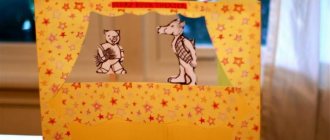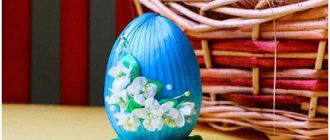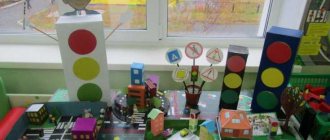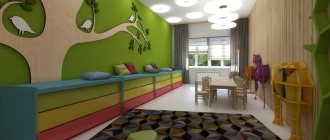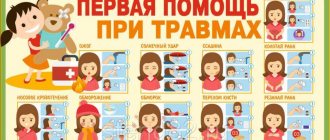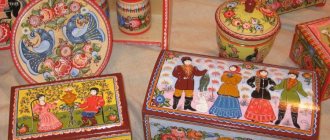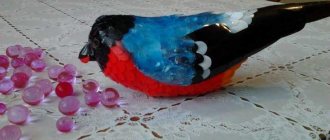One of the most exciting types of needlework is crafts made from scraps and fabric scraps. Handmade Tilda dolls, denim souvenirs, bags, rugs, rugs and bedspreads in patchwork style, as well as decorative patches for stylish clothes.
Simple and affordable ways to combine materials and methods for quick edge processing, shown in the note, are easy to put into practice.
What materials and tools will you need?
In any home you can find a large amount of unnecessary scraps suitable for fabric crafts for children. This type of needlework activates brain activity and concentration, and develops fine motor skills.
Unlike paper, flap is a more difficult material for needlework. Its edges must be properly processed, the seams must be smooth and neat.
Helpful advice! If the child holds a needle in his hands for the first time, suggest carefully sewing buttons on a soft toy as a first experience. This is also an important part of the learning process, including boys, the experience will be useful for life. He must be able to thread a needle, make a knot, hide it on the wrong side of the product and secure the end of the work.
To make any fabric craft for children you will need simple sewing supplies:
- a set of needles (in a pincushion);
- spool threads of different shades;
- small scissors with sharp ends;
- cotton wool or padding polyester for stuffing soft toys and crafts;
- pieces of fabric (preferably not very dense, but so that the edges do not fray).
Sewing skills take years to learn, so it’s best to start with the simplest. This includes cutting figures according to patterns and mastering the basic types of stitches. First explain to your child the safety rules - how to work with scissors and a needle.
No matter how much fabric there is, it is important to teach your child to cut economically by laying out patterns. Many children tend to cut fabrics in the center, even if they are old curtains.
Manual "Fabric Collection"
Lyudmila Verchenko
Manual "Fabric Collection"
Dear Colleagues! I would like to introduce you to my “fabric collection”!
I thought and pondered for a very long time how to make it so that the children could see what it is made of and what they sew from it. Of course there is a very large amount of fabrics. And it’s simply not possible to collect all the fabrics. I of course started with the basic fabrics that kids need to know. And I started with natural ones, which are made from natural raw materials. These are cotton, linen, wool and silk. I selected pictures and printed them out.
Goal : To introduce children to different types of fabrics. Teach to distinguish by touch and by external signs. Enrich children's vocabulary.
Of course, I will continue to expand the collection with other fabrics, since I haven’t collected everything yet. Children can touch all fabrics. They can be easily retrieved from files.
Let's start watching!
We will continue to replenish and other types of fabrics will appear.
Thank you for your attention!
Collection “Dolls in folk costumes” I bring to your attention a collection of dolls in folk costumes. All dolls are made of porcelain, handmade. The costumes for them are made of high quality.
Abstract of the GCD “Clothing by season: winter, summer, demi-season. Types of fabrics" (senior preschool age) Educational goals: To consolidate children's knowledge about the general concept of "clothing". Introduce children to the classification of clothing by season - winter,.
Card index of experiments and experiments in the senior group “Identification of the properties of natural fabrics” state budgetary educational institution secondary school named after the hero of the Soviet Union Matvey Nikiforovich.
Family collection of children's books “How to be able to read well!” How wonderful it is to pick up a book that your mother saved! We got this opportunity thanks to...
Fabric Craft Ideas for Beginners
Small fabric crafts for beginners are good practice for those who want to learn how to sew competently and beautifully.
Many famous designers admitted that in childhood they started with clothes for dolls, for example, for their younger sister. Even boys sometimes enthusiastically swear at cosmetics or an oven mitt for their mother, as in the example in the photo.
Decorative patches made from non-fraying materials can be easily mastered by beginners. Hearts, smiley faces and cute faces made of felt, leather or suede will help restore children's things, giving a new meaning.
Seaming the edges of napkins by hand is a painstaking task. It’s a little more interesting to make nose caps and napkins from natural fabric with fringed edges.
By removing 8-10 threads along the edge of a chintz or linen square, they create an original product, from which you can even make a doll-amulet.
Helpful advice! It is worth decorating a homemade handkerchief with a fringed edge with small embroidery. Initials on one corner of the napkin will turn an ordinary product into a pleasant personalized gift.
Teach your girl how to make neat straight stitches - soon she will sew like a professional seamstress. Barbie toys and clothes are great practice for a little dressmaker.
Crafts in patchwork style
Original do-it-yourself fabric products laid out according to a pattern - a traditional way of working in patchwork style. The aesthetics of a DIY patchwork quilt or crib cover largely depends on the layout of the patches and the accuracy of the sewing.
“Aerobatics” – rugs and blankets in the form of pictures, laid out from different materials. In this case, each fragment has its own shape; symmetry is not as important here as the overall pattern.
Album “Types of fabrics”
Khonina Svetlana Vitalievna
Album “Types of fabrics”
How many different fabrics ? I asked this question to preschoolers. And the guys began to look around and ask, “What is my dress made of,” “What about my shirt?”
of fabric from home . We started looking at it and it turned out that fabrics and they were very different. Some are thick and others are thin, some are smooth and others are fleecy, light and heavy. We took a sketchbook and started gluing fabrics . Valentina Aleksandrovna Brovkina, the grandmother of one student who worked for a long time as a salesperson in a department store, helped us recognize the types of fabrics The children's vocabulary was replenished with the names of fabrics : satin, tapestry, linen, jeans, drape, brocade, ligature, silk, velor.
In the hot summer, light cotton scarves and sundresses are worn. Expensive dresses, blouses and scarves are made from brocade. Elm is used for sewing bed linen.
The album turned out to be interesting, all the children took part in its creation. All fabrics can be touched , and this is very important for preschoolers.
Album of interaction between kindergarten and family “Diary of interaction between family and kindergarten” One of the forms for interaction between kindergarten and families of pupils. Goal: Involving parents.
Album "Winter" Album: "Winter". Created by: Smirnova Marina Vitalievna I offer didactic material to familiarize children with the world around them. Goal: develop. Photo report “Album “Literary and artistic creativity of children” Good laziness, dear colleagues! I present to you a photo report “Literary and artistic creativity of children.” As you know, it’s a BOOK.
Notes on environmental and artistic education in the preparatory group “In the World of Fabrics” Program objectives: to form in children a clear idea of various types of clothing, their purpose, and application. Give knowledge about natural
Lesson summary for preschoolers “My Family Album” Municipal budgetary educational institution of additional education for children Center for extracurricular activities “Harmony” in the city of Tikhoretsk.
Project “Children's Album of P. I. Tchaikovsky” 2nd slide Goal: to introduce children to the pieces of the piano cycle by P. I. Tchaikovsky “Children’s Album” Objectives: educational to introduce.
Patchwork crafts for home
Decor made from colored pieces is the easiest way to update your interior.
Pot holders are a good practice for sewing small fabric items. They can have any meaning, for example, cute animal faces, flowers or fruits.
You can decorate your children's room with a themed collection in the form of sweets. All made from fabric with your own hands:
- ice cream cone;
- cake;
- Chupa Chups;
- candy;
- bar.
Important! Children's “edible” decor is only suitable for those children who no longer put everything in their mouths. If a child is prone to being overweight and has an excellent appetite, it is better to avoid such decor.
Homemade dolls and funny small soft toys are easy to sew, but you need a pattern and some sewing experience.
By varying the clothes and emotional mood of the toy “faces”, it’s easy to create a whole collection. It will take its rightful place on a shelf or in a glass display cabinet.
Educational crafts made from fabric with children
When a child has no experience in sewing fabric products with his own hands, it is important to interest him in an attractive design and a simple method of execution.
If something doesn’t work out, an adult should help - show how this or that stitch is done. It’s better to start with the simplest thing - show how to lay out patterns, for example, for a soft toy.
A flat toy stuffed with cotton wool or padding polyester is the simplest example of needlework, where children can do most of the work themselves. Adults should help the child complete the finished halves of a Cat, Doggie, Deer or Teddy Bear, showing them the basics.
A toy stitched along the edge with a contrasting stitch will simplify and speed up the work - stitching and overcasting are done simultaneously. All that remains is to design the face.
Helpful advice! Buy “running eyes” at a haberdashery store; this will enliven any craft in the shape of an animal.
For an advanced level - educational books and rugs for children, made by adult hands. For example, a book for a doll with pockets containing items necessary for daily use.
When a child uses objects to wash, feed and dress the doll, he develops himself.
Fabric crafts for children
One of the most practical are handmade soft toys used in the form of sofa cushions. Excellent decor for a children's room.
Many elements can be assigned to be completed independently, for example. For example, he himself can make rays for the Sun, ears for a Hare or horns for a Deer.
Felt animal figures are very easy to make with children, especially if there are patterns and a clear description of the work. Today you can master any technique from scratch using free video master classes.
The photo shows the best examples of what to make from fabric with your own hands together with your child.
How to design a fabric collection
Anna Sokolova
How to design a fabric collection
A collection of fabrics should be present in the developmental environment of each group. And I racked my brain for a long time on how to make it look beautiful, affordable and durable.
For work, I needed samples of different fabrics measuring 19*19 cm, cardboard, names of fabrics.
First we need to process the edges of our scraps so that the collection will serve us longer.
We fold the cardboard in half and attach the fabric with a stapler, paste on the name of the fabric and one page of our collection is ready! (So that the “pages” can be easily punched with a hole punch or booklet maker, do not push the fabric towards the fold itself, otherwise threads will stick out from the holes)
Then, when all the pages are prepared, we fasten them with a booklet maker or you can use a hole punch and a binder.
For the covers I used laminated pictures.
This is the collection of fabrics I ended up with!
Album “Types of Fabrics” How many different fabrics are there in the world? I asked this question to preschoolers. And the guys began to look around and ask, “What is my dress made of?” How to register a group for the new school year September has arrived. My kids have grown up and are now in the middle group. We educators, together with parents, enjoy studying. How to formalize the name of the group in the reception area My middle group is called “Droplet”. Recently, my daughter and I decided to replace the “Droplet” inscription with something beautiful. For work we needed:.
How to draw up the minutes of a parent meeting While working as a teacher in a kindergarten, I encountered the following problem: it turns out that you need to be able to correctly draw up the minutes of a parent meeting.
Lesson summary for the senior group “Familiarization with the properties and qualities of fabrics” Program objectives: To consolidate and supplement knowledge about different types of artificial and natural fabrics, their appearance, quality and purpose.
Master class “How to decorate a group room or reception area easily and beautifully” Kima Ilyichevna Kazaryan 1st quarter category Master class: How to decorate a group room or reception area easily and beautifully Kima Ilyichevna Kazaryan.
Source
Crafts made from denim
Scrap jeans are the best way to make toys and crafts without the expense of buying fabric. “Denim” comes in different densities, summer and winter, it combines well with other fabrics. The main value is the natural, environmentally friendly basis of this material.
Important! Craftsmen recommend taking a fabric that is not very hard, combining it with other fabrics of the same density or a little softer. Then crafts made from denim will look very impressive. Very thick or dense denim, which is difficult to sew with household machines, is only suitable for furniture covers.
Practical bags made from old jeans are a fashion accessory you can help your teenage daughter model. An original applique will make the bag exclusive.
Practical pillowcases for sofa cushions and bolsters made of denim are another way to dispose of mountains of unnecessary trousers that have accumulated over the years.
For ease of use, these pillowcases are equipped with a zipper. It will decorate a cottage or country house. Unusual decor - the same appliqués, as well as ruffles made of other natural materials.
Project “For children about fabrics”
Project “In the wonderful world of fabric”
Introducing children to everything that society does is the most important task of all generations.
The main issue of the project is creating conditions for the development of preschool children through familiarization with the properties and qualities of fabric. The project clearly traces the relationship between the cognitive development of a preschooler through cognitive and research activities. The project contributes to the development of pupils’ horizons, the formation of cognitive activity, and respectful attitude towards working people.
Objective of the project:
development of cognitive abilities and cognitive activity of middle-aged children, through familiarization with the properties of fabric.
Formulation of the problem:
The choice of the project topic was not accidental. One day, two dolls “came” to the children’s group. One doll was wearing a dress made of leaves, and the other was wearing a dress made of animal skin. This information was from the history of the origin of the clothes. Getting acquainted with the types of modern clothes and what they are made of, it turned out that many of the children do not know what fabric is.
This is how the idea of the project arose and a great desire to pass on to every child not only knowledge about fabric, but also to bring them to the understanding that fabric is very necessary and useful for humans, as well as to introduce children to the purpose of fabric.
Project type:
- According to the dominant activity in the project: research, educational.
- Content: pedagogical.
- According to the composition of participants: group.
- By duration: short-term, 10 days.
Location:
Children's educational institution No. 104, group No. 3, as well as a mini-laboratory and a wardrobe maid's office.
Objectives of project activities:
- “Cognitive development”: help children learn about the properties and qualities of fabric; develop cognitive interest in research activities, the desire to learn new things; develop research skills.
- “Speech development”: develop connected speech, activate and enrich vocabulary, and also develop children’s play activities; ability to work in a team, participate in joint experimental activities.
- “Social and communicative development”: to cultivate a value attitude towards the work of adults, to introduce the profession of a seamstress, and safety precautions when working with scissors and a needle.
Educational:
develop memory, thinking, logic (draw conclusions), attention (ability to see the main thing).
Project stages:
- Organizational and preparatory.
- Basic.
- Final.
Project participants:
teacher Pishchugina Lilia Vladimirovna, children of the middle group, parents of children, housekeeper Khoroshilova Marina Yuryevna.
Expected results:
Enriching children with knowledge about the properties and qualities of fabric will help them identify objects such as function (method of use) and purpose (ability to satisfy needs).
Relevance:
The surrounding reality appears before the child in all its diversity: nature, man, the man-made world, etc. Introducing children to everything that society lives is a task that humanity has been solving since the need to pass on the experience of the previous one to each subsequent generation began to be realized.
The objective world has a great influence on the emerging needs of a little person and serves as a kind of support for him in communicating with other people. Through the object, the child learns that the world has different properties and qualities. He masters ways of acting with objects, and this helps him acquire “power” over the world in which he lives. The subject introduces the child into the world of adults, “informs” him about this world, enriches the content of social experience and influences all-round development.
The formation of attitudes towards the objective world is reflected in the studies of R.I. Zhukovskaya, R.I. Zinchenko, I.I. Rozanova, who studied the process of instilling a caring attitude towards the results of the work of adults and developing in children a feeling of gratitude to an adult for caring about them. The objective world in their works is seen as a means of instilling such moral qualities as thrift, care, accuracy, hard work, the habit that every thing has its place, and the awareness that adults work hard to create things, so the results of their labor must be preserved.
Objects are characterized by characteristics that the child perceives through sensory means, i.e. visually, tactilely, tactilely and through mental operations. This is what ensures the development of his personality.
According to O.V. Dybina, children’s cognitive activity is realized in activities. It is search activity that is capable of mobilizing the strength of preschoolers in understanding reality, independently discovering its connections, relationships, patterns, and in transforming experience.
Therefore, children 4-5 years old need to be introduced to the objective world in the process of acting with objects, i.e. allow children to feel, stroke, break, tear, bend, squeeze, throw, lift, etc.
Project implementation.
- Stage
During the organizational and preparatory stage, we, together with the parents, carried out work to collect an album on the topic: “The World of Fabrics,” which includes samples of material. As well as creating a folder “About Fabric”, which includes information about each fabric sample (see the album “World of Fabrics”)
- Stage
During the main stage, we carried out educational and research activities. In the laboratory of our educational institution, we conducted experiments to familiarize ourselves with the properties and quality of fabrics. We also visited the office of the wardrobe maid, Marina Yurievna Khoroshilova, in order to get acquainted with the profession of a seamstress.
- Stage
At the final stage, we conducted a lesson to consolidate the knowledge gained during the implementation of the project.
Chintz
Made from natural cotton using plain weave. Previously, the Surat species was often used for production. It has a medium thickness and twist.
Standard thickness is from 80 to 100 g/m. Plain weave is the simplest. One warp thread corresponds to one weft thread. The manufacturing process is as follows:
- Procurement of raw materials
. First you need to collect raw cotton. It is cleaned and prepared for carding.
- Carding comb
includes: loosening, mixing, scuffing and scraping. Debris is removed from the raw material, it is combed out and bleached.
- Once the fibers have become clean and uniform, they dyed or woven into fiber
. Typically, “surface” dyeing is used for chintz, that is, the design is printed on the finished fabric, rather than the fibers being dyed
Plain weave is also considered the most durable. The weft thread overlaps every other warp thread. It refers to the main weaves. As a result of its modification, patterns are obtained. You can easily see the even and odd warp threads on the fabric. This fabric is usually produced on machines with 2 and 4 healds.
Chintz is dyed using the printed method. This method originated in India. Initially it was “manual”, so the price was far from budget. In order to apply the image, blank boards were made. They were usually made of wood. The required pattern was stamped on them. The areas that were to be painted were filled with paint. Then fabric was placed on the boards, and the surface was tapped with hammers.
Currently, the printing method has moved from the category of manual labor to machine labor, but the principle remains the same. Moreover, the first steps in this direction were taken at the end of the 18th century in Switzerland.
Application area
Chintz is an ideal material for the summer heat. It's light. The fabric allows air to pass through well and prevents the body from overheating. The natural material is pleasant to the body and does not irritate the skin at all.
Used for sewing the following products:
- Summer women's and children's clothing (sundresses, dresses, shirts);
- Homewear and sleep options (pajamas, nightgowns, dressing gowns);
- Bed linen and decorative pillows;
- Tablecloths, curtains, potholders.
This is an ideal material if you decide to decorate your kitchen in Provence style. It is gentle, light and unobtrusive. At the same time, he is very cute and “homey”. If you want to make the room cozy, then pay attention to sofa cushions, tablecloths or chair covers made of chintz. The pattern with a small flower or stripe is especially charming.
Advantages
Let's talk about the advantages:
- Natural environmentally friendly material;
- Bright colors and interesting design;
- Safe for children;
- It does not require special care;
- Absorbs moisture well and allows air to pass through;
- The body under chintz products “breathes”;
- Affordable price;
- Wide range of applications;
- Easy to sew.
Flaws
But it also has significant disadvantages:
- May shrink;
- If it is poorly made, it quickly breaks and fades;
- Crease level is above average.
Modern chintz, thanks to new processing technologies, cannot be compared with the material that was 20 years ago. Other dyes are used, which allows the fabric to fade less. New developments in weaving are helping to make the material less easy to tear. All this definitely smooths out the existing shortcomings.
Chintz is not only an opportunity to return to the good old Soviet times. This is a material that, despite its low cost, has many pleasant characteristics. It is environmentally friendly and lightweight. The material allows you to create a delicate image of your home and bring a piece of French into it
Linen
Linen is a fabric of plant origin that has the following properties: linen products absorb moisture well and dry quickly. This is the most breathable fabric. Linen clothes can be worn both in winter and in summer: in hot weather, linen material “cools”, and in cool weather it warms. In addition, the fabric is easy to wash, dries quickly, is very hygienic and durable. Linen has very high strength, but also wrinkles easily. Has low elasticity.
It is not recommended to use acidic solutions on fabric; they destroy it. Dyed linen should be washed at a water temperature of no more than 60 degrees.
It is not recommended to dry linen near heating devices or in the sun. Linen should be ironed with a hot iron from the wrong side of the fabric, using moistened gauze. Some linen items are worn slightly wrinkled to emphasize the delicacy of the weave.
Cotton
Cotton is a natural material that is extracted from cotton bolls. Chintz, calico, satin, thin cambric and chiffon, denim - these are just some of the materials that belong to cotton fabrics. Cotton products have good hygienic properties, easily absorb moisture, and allow air to pass through. Cotton is comfortable and pleasant to wear, soft and has mechanical density, relatively high heat resistance. The fabric is characterized by easy creasing. Comparing it with other plant fibers, it can be noted that the warming effect of cotton is higher than that of flax. Cotton is stronger than wool, although less durable than linen or silk. Cotton products shrink when washed and take a long time to dry; they cannot be dried in a washing machine, with heating devices or in the sun.
White cotton is washed at temperatures up to 95o, colored or dark - up to 40o. Cotton clothes should be ironed using damp gauze.
Wool
Wool is the softest and warmest type of fabric, similar in structure to human hair. Modern woolen fabrics are divided into two categories: wool (90% wool thread) and wool blend (20-90% wool + lavsan, nylon or viscose). Woolen fabrics of the second category are less soft, warm, but more wear-resistant. By origin, wool can be: camel, sheep, rabbit, dog, etc. Wool has the highest hygroscopicity among fabrics (absorbs up to 40% of moisture, while remaining dry to the touch). Very delicate and soft fabric. Woolen fabrics get dirty a little and hardly wrinkle.
It is recommended to wash wool products by hand using special wool detergents. Wool shrinks a lot when washed. The fabric should not be washed in powders containing bleach, it should not be rubbed or wrung out vigorously. The wool is dried in a horizontal position on a terry towel. Wool should be washed and rinsed in water at the same temperature. The recommended temperature for washing wool is no more than 50? C, and in some cases not higher than 30? C. It is better to iron woolen items damp through damp cotton cloth.
Silk
Silk is obtained from the cocoon of the silkworm, in an absolutely natural way. The fabric is soft and pleasant to the touch, perfect for hot weather. It quickly absorbs moisture and dries quickly. Silk fabrics are very durable and light. There are practically no pellets formed on silk fabric. Twisted silk is considered the highest quality; it is obtained from long threads from the middle of the cocoon. Silk fabric requires hand washing at 30°C with soft washing powder, with a light spin. It is best to dry silk items in the shade. Iron silk items from the inside out, slightly damp, but the product cannot be additionally moistened, as stains will remain. When washing, any silk sheds a lot, so it needs to be rinsed first in warm and then in cold water. To restore color saturation, it is recommended to add vinegar while rinsing in cold water.
Denim - interesting facts
What is denim
Denim is a thick cotton fabric with a twill weave. Twill weave forms clear diagonal stripes on the fabric - a rib.
Most denim has a right hand weave twill. In it, the hem goes from bottom left to top to right. These fabrics are denser and more durable, with an uneven surface. During use, they are wiped off unevenly and become more contrasting.
There are denim fabrics with a left-hand weave, in which the rib is directed in the other direction - from bottom right to top left. These fabrics have a smoother and smoother surface.
And there are denim fabrics with broken twill, in which the weave forms a herringbone pattern on the surface. These fabrics are softer and have an original appearance.
Well, modern designers offer a variety of new variations of weaves that form various designs and patterns.
Denim composition
Denim fabric is cotton. That is, they get it from cotton. And the quality of the fabric largely depends on the type of cotton used. Most fabrics use short-staple Indian and Asian cotton due to its low cost.
In the last century, stretch denim appeared thanks to the addition of the elastic polyurethane thread elastane. Stretch fabrics contain 2–7% elastane, are elastic, resilient, and allow you to sew narrow, tight-fitting models.
Modern manufacturers are constantly experimenting and improving the production of denim fabrics. They combine two different layers into one: denim and knitwear, raincoat, wool, silk, etc. materials. And they obtain dense, elastic, flexible fabrics with remarkable heat-protective properties.
New life for old things
Thrifty owners never waste anything; many materials are reused. They can easily be used when working in one of the techniques.
It is most convenient to work with materials that do not require edge processing. For example, you can make slippers, bags, oven mitts, stands for hot cups and many other useful things.
Depending on the properties of the craft, use materials that do not require processing:
- thin felt;
- lace fabric;
- interlining lining;
- overcoat cloth;
- artificial suede;
- synthetic leather.
Original crafts made from scraps of fabric of the same format can be easily cut, folded and assembled from identical fragments or laid out like modular origami:
- A beautiful handbag made of petals in the shape of a flower.
- Volumetric balls for interior decoration.
- Pouf-pillow with a cover made of colored rags.
- DIY New Year's decorations from leftover velvet, brocade, nylon and satin.
A more advanced level - miniature toys in any design or in the Japanese tradition. They are performed using a combined technique, using knitting, sewing and making faces from salt dough.
Motanka is a traditional Slavic amulet made of fabric and braid, placed on the face in a cross.
Visual aid “Types of fabrics”
Domnina Galina
Visual aid “Types of fabrics”
Hello, I would like to suggest making a manual “Types of fabric ”
for the topic
“Clothing”
This colorful, bright manual will allow the child not only to visually see the variety of fabrics , but also to touch it. fabrics in rich colors, those that are found in everyday life.
Prepare various rags, but I focused more on cotton ones.
A4 photo paper
Laminated A4 sheets
Tissue flaps
1. We take different types of fabrics .
2. We choose from them according to classification. Vegetable animal origin and synthetic artificial fabrics .
3. We make clothing blanks on paper. You can fantasize.
4. I advise you to prepare A4 sheets with a background and laminate them. This is necessary so that the sheets do not fray, and children can touch the fabric for softness , hardness, smoothness, thickness.
5. Take scraps of fabric and lay paper clothing samples on top.
I prepared samples of plant tissues
6. Take woolen fabrics . We lay out the paper blanks in the same way. Cut it out and paste it into an album.
New Year's crafts made from fabric
The most interesting topic for updating interior decor is the holidays. Every year some animal is honored according to the eastern calendar. With their fabrics you can create a cute little face with your own hands - the symbol of the year:
- An example for the year of the Dog.
- Year of the Cow or Bull.
- Year of the Sheep.
Today, many people refuse to cut down Christmas trees for the sake of several days of the Holiday. New Year's beauty is replaced with artificial products. Balls, snowflakes, garlands and other Christmas tree decorations are easy to make with your own hands:
- Father Frost and Snow Maiden using the Tilda doll technique.
- New Year's balls made of fabric. They can be additionally wrapped in satin ribbons or embroidered with beads and sequins.
- DIY garland.
- Christmas Angel from a napkin with a fringed edge.
- Gift Christmas trees with bead embroidery are great “exchange” gifts for office colleagues.
As can be seen from the numerous samples in the photo, fabric crafts for beginners and skilled craftswomen are a great way to give a second life to colored scraps and the remains of beautiful fabric.
This is an endless topic for implementing good ideas, starting from very practical interior items, ending with New Year's toys that will delight your loved ones and guests in just a few days.
